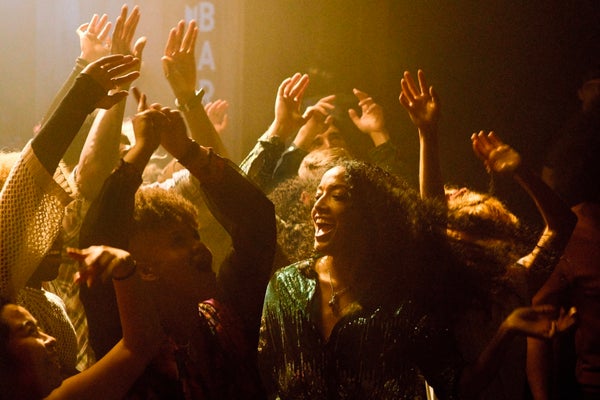Why Some Songs Makes Everyone Want to Dance
A syncopated rhythm may prompt our brain to find the beat
A group of people dancing.
Flashpop/Getty Images
Experts have gained deeper insight into why people spontaneously dance to music. That impulse to bop to the beat—what some scientists call the “groove experience”—depends on music’s degree of syncopation, a feature that affects how predictable the rhythm is, a new study finds.
The work reveals “why we cannot resist moving in sync with the beat when we listen to music with an optimal level of syncopation,” says Benoît Bardy, a professor of movement science at the University of Montpellier in France. Bardy, who was not involved in the new study, calls it “a very innovative piece of science.”
Syncopations are rhythmic patterns in which accented or unaccented beats in a melody appear in surprising places relative to the underlying beat. The more syncopation a piece of music contains, the less you can guess the rhythm of the next few bars as you listen.
On supporting science journalism
If you’re enjoying this article, consider supporting our award-winning journalism by subscribing. By purchasing a subscription you are helping to ensure the future of impactful stories about the discoveries and ideas shaping our world today.
In a series of experiments with more than 60 participants, cognitive neuroscientist Benjamin Morillon and his team from Aix-Marseille University in France uncovered how syncopation relates to the groove experience. In one study, they played 12 different melodies. The main beat was always two hertz, or roughly two events per second. But the melody’s rhythmic shifts varied so that each tune was played with three different degrees of syncopation. Participants then rated how much they wanted to dance to each track.
As Morillon and his colleagues reported in the journal Science Advances, a medium degree of syncopation triggered the strongest desire to move to the…
Read the full article here







